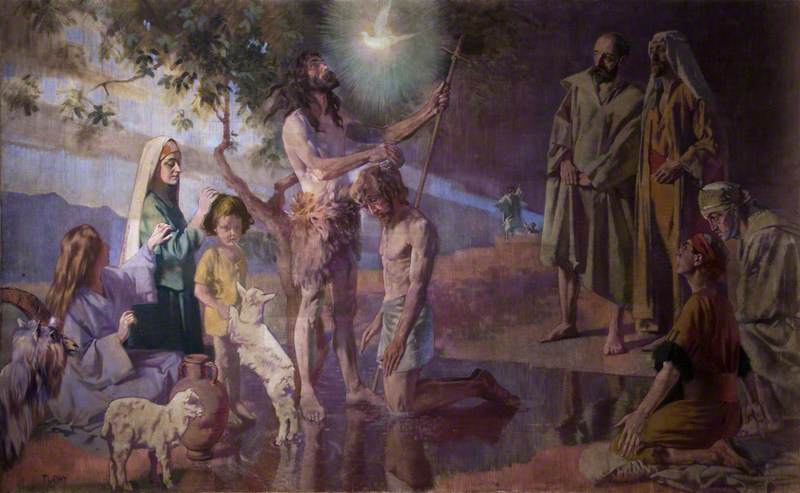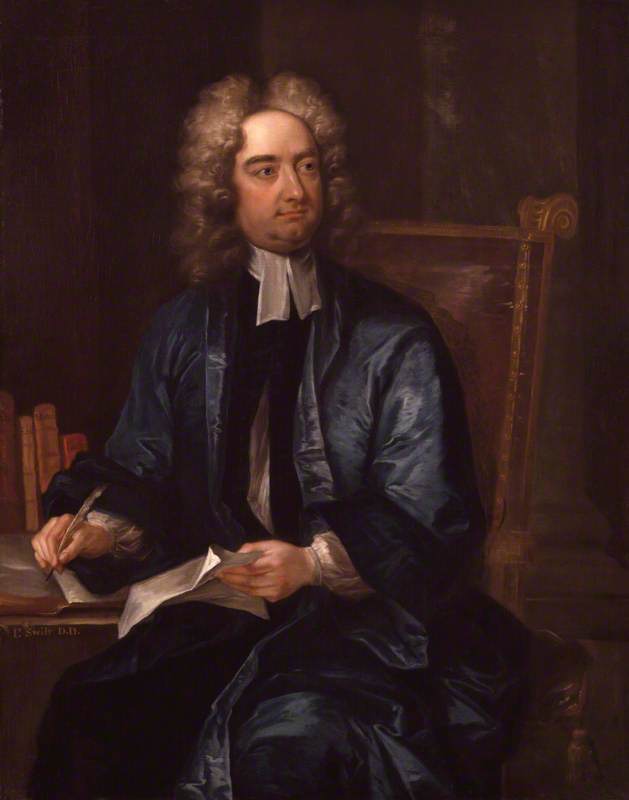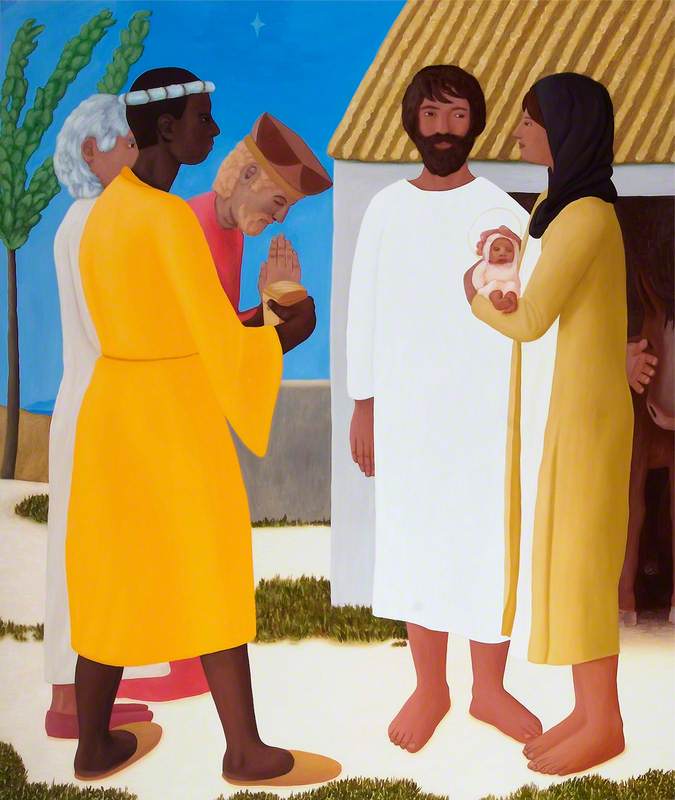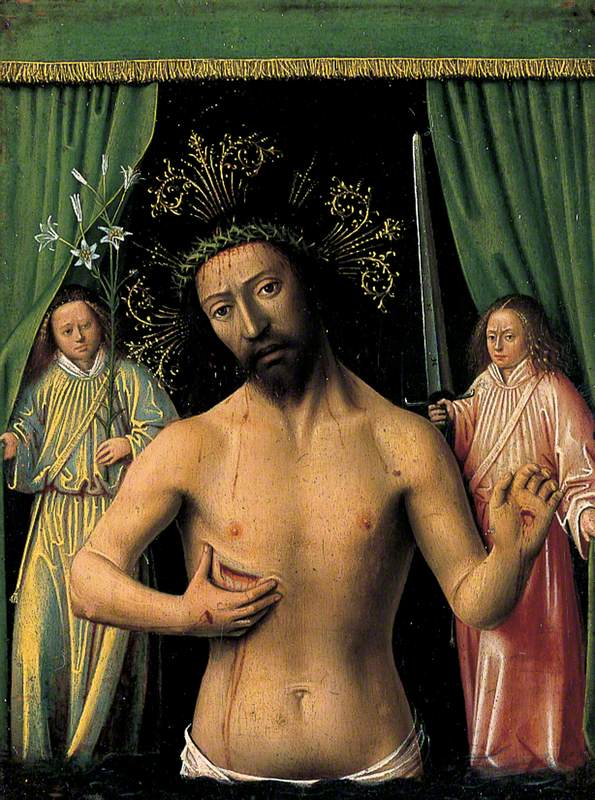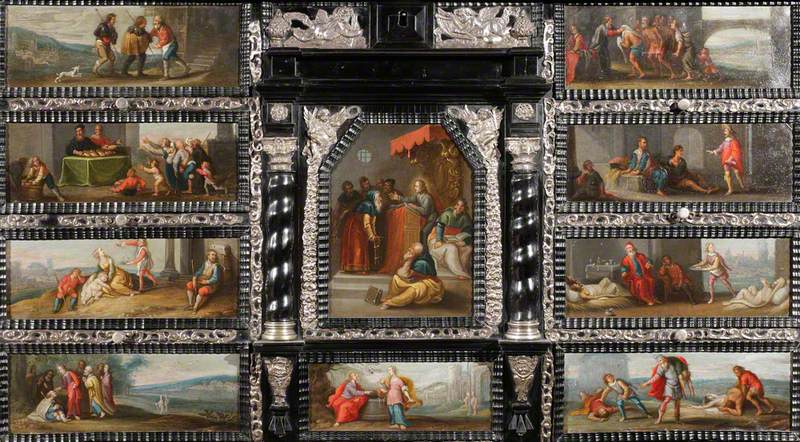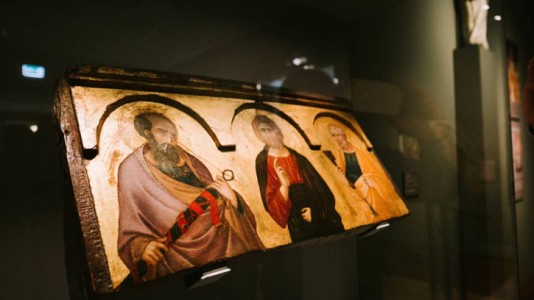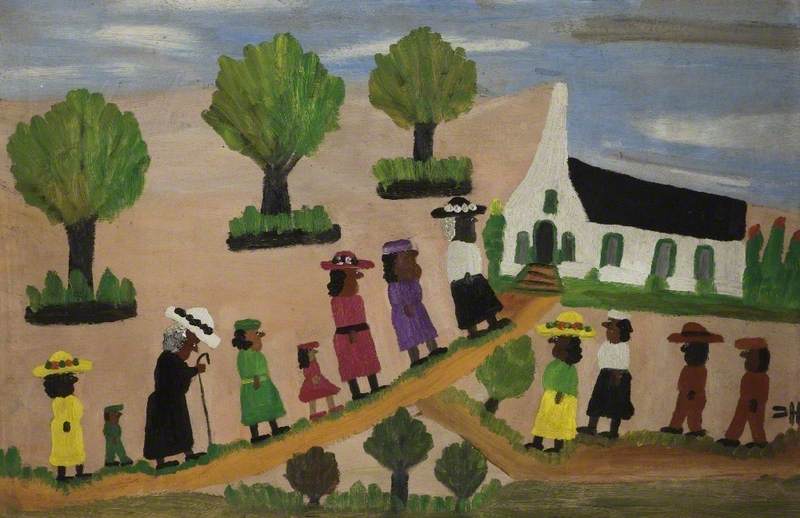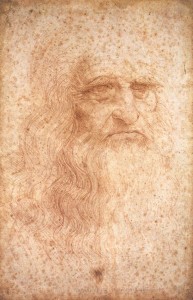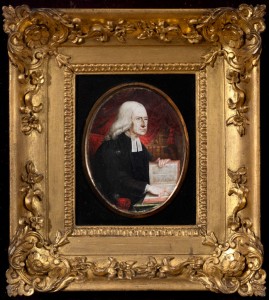In his 3rd May 1925 review of the Annual Exhibition of the Royal Academy in London under the title 'Striking works by New Painters', Frank Rutter, art critic of the Sunday Times, singled out this painting for particular praise. 'The great and delightful surprise of this room [gallery vi] is the truly decorative and reverently expressive Baptism of Christ (291) by the hitherto unknown Irish artist P. J. Tuohy. Mr Tuohy who has been able to understand Puvis de Chavannes without imitating him, is at the Dublin School of Art. So was Orpen. To prophesy is hazardous, but Tuohy is an artist I shall keep my eye on.'
Tuohy was my mother Maura O’Brien’s brother; in recent years there has been a revival of interest in Tuohy’s skilled portraiture. As detailed below, I would be very grateful for any help in tracking down some of the works that have disappeared since his death in 1930. Tuohy had been a pupil of William Orpen for five years. Later he studied for two years (1916–1918) in Madrid in the Prado and for short periods in Paris, Rome and Florence. He was appointed a teacher in the Dublin Metropolitan College of Art (DMSA) in October 1920. During his training he won a number of awards including the prestigious Taylor Art Scholarship Award (coming first three times and gaining nine subsidiary awards during the years 1911–1918), the Dublin School of Art Scholarship in 1913; and a silver medal for a painting from the nude in competition with all the art schools in the UK and Ireland. The Baptism of Christ was awarded a silver medal when exhibited in Dublin at the 1924 Tailteann Games, Art Exhibition.
The painting was commissioned by a parish priest who died before it was completed in 1923, and therefore the fee for it was not paid. The executors of the priest’s Will did not, it appears, want to complete the transaction so it was eventually given to Tuohy’s brother-in-law, Patrick J. O’Brien, in lieu of an outstanding personal loan.
Tuohy used his friends and colleagues as models in many of his paintings as in this picture. The girl with the flowing black hair on the left is Phyllis Moss. The small child is John Power, son of the sculptor Albert Power, academician of the Royal Hibernian Academy. John later followed in his father’s footsteps. John told me in conversation that Tuohy wanted him to pose naked but he just refused to do so and insisted on posing as in the picture. The young woman is John’s sister May, who later became an accomplished artist.
Tuohy found his ‘John the Baptist’ one morning on Rathmines Road in Dublin when he accosted a man, John J. Gaynor and asked him to pose for a picture he had in mind, saying he was a poor artist but Gaynor would be a fit model. Tuohy rewarded him with a fine pencil portrait.
The figure of Christ is Sean Keating RHA, painter and contemporary of Tuohy as teachers in the DMSA. On the right side the young man hunkering is Sean O’Sullivan RHA, painter, friend and contemporary of Tuohy. The kneeling figure with head bent slightly is Thomas MacGreevy, close family friend, later Director of the National Gallery of Ireland, a polyglot, poet and art critic. The first standing figure has been identified as most probably Sir Hugh Lane. The remaining figure has not yet been identified.
Tuohy was a slow worker with an almost obsessive care for detail. Over three days he worked getting the Baptist’s grip of his staff before he was satisfied with it. The anatomical details of the figures, both human and animals, the reflections visible in the water of the Jordan are instances of this diligence.
While Tuohy had previously painted another large religious scene The Agony in the Garden (c.1915–18) as a reredos for a convent oratory in Dublin, and pictures of Irish saints, his reputation was for portraiture as exemplified in the oil painting of James Joyce’s father, John Stanislaus, now in the Joyce Centre at the University of Buffalo, New York.
Life was hard for artists in Dublin during the Anglo-Irish Treaty and Civil Wars days in the early 1920s. It was almost impossible to sell paintings at the time and this led to Tuohy resigning from the College of Art and going to the USA in 1927, where he hoped to improve his financial position and marry his fiancée, Phyllis Moss, a former pupil. During his ultimately brief years in America, Tuohy concentrated on portrait commissions of people prominent in the business world, the professions, academic life, the theatre, and at the time of his death he was completing portraits of the Hollywood actress Claudette Colbert, Dudley Diggs and Walter Hampton.
A critic for the New York Sun reviewing the first American Exhibition of Contemporary Irish Art in the Helen Hackett Gallery, stated ‘Mr Tuohy paints very well. I fear he paints portraits better than anyone we have at present in America.’
John O’Brien, nephew of the artist
